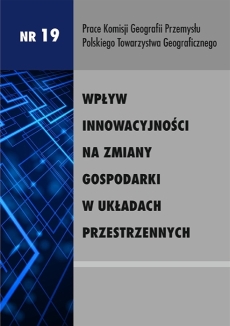Measuring and ranking the innovative potential of cities
DOI:
https://doi.org/10.24917/20801653.19.4Keywords:
innovativ, cities, SiberiaAbstract
The ranking of cities according to their individual intellectual (innovative, organizational, creative, central, etc.) potential is actual and important for geographic studies in the epoch of post--industrialization. The results of such ranking can be applied in various aspects and directions of regional policy.The very idea of such ranking seems to have been first formulated in France in the early 1960s. The research concerned was aimed at solving the problem of hyper-centralization in that country through forming ‘metropoles d’equilibre’ in the periphery, to counterbalance Paris. The task was to find the French cities which were ready to fulfill this role. Later, we have used this idea to rank Siberian cities as to their administrative potential. The important innovation in methodology was introduction of a principally new index, crucial just for Siberia (although maybe less important in Europe). This index is the distance from the nearest comparable or obviously more significant cityDownloads
References
Hautreux J., Lecour H., Rochefort M., 1963, Le niveau supčrieur de l’armature urbaine française, Paris.
Jakobson A., 1994, Territorialnaya organizatsiya regionalnoy polityki, Novosibirsk.
Siłka P., 2011, Typologia miasta na podstawie struktury potencjału innowacyjnego, [w:] Problematyka 27. Międzynarodowej Konferencji Naukowej nt. Wpływ innowacyjności na rozwój przedsiębiorstw i gospodarki w układach przestrzennych, Kraków–Warszawa, s. 77.
Stryjakiewicz T., 2009, Creative sector as a factor of regional development, [in:] Road, Region, Market,
Irkutsk, p. 104–116.
Downloads
Published
How to Cite
Issue
Section
License
Articles are published under the terms of the Creative Commons License (CC BY-ND 4.0; Attribution– NoDerivs).

